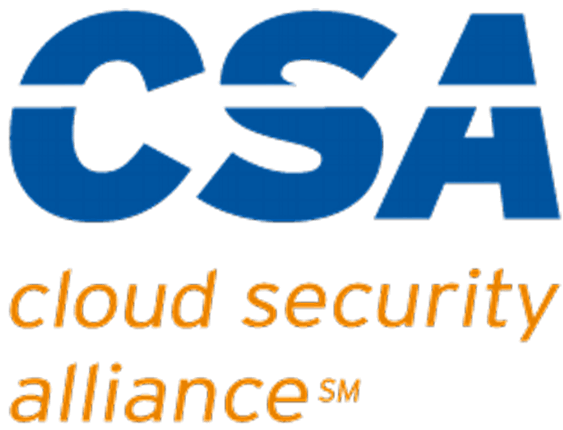In today’s fast-paced “instant everything” business environment, secure and efficient file sharing is essential. Whether it’s sharing documents internally or collaborating with external stakeholders, small businesses must balance maintaining data integrity and ensuring confidentiality while boosting productivity. This guide explores secure file-sharing options tailored for small business needs, offering practical examples and product recommendations for various use cases.

Why Secure File Sharing Matters
File sharing is a cornerstone of business operations, enabling seamless communication and collaboration. However, it also introduces risks like data breaches, unauthorized access, and compliance issues. These risks can be devastating for small businesses, leading to financial losses and reputational damage. Secure file-sharing solutions protect sensitive information and ensure compliance with industry regulations like GDPR, HIPAA, or SOC 2.
Moreover, the need for secure file sharing increases as remote and hybrid work environments become more prevalent. Employees working from different locations require tools to access and share files securely without risking the company’s sensitive data. Adopting robust file-sharing practices ensures security and business continuity in a distributed workforce setup.
Key Features to Look For in Secure File-Sharing Solutions
Before diving into specific products, it’s essential to understand the key features of a secure file-sharing solution:
- End-to-End Encryption: Protects data during transit and at rest, ensuring that only authorized parties can access the files.
- Access Control: Allows businesses to manage who can view, edit, or share files, with options for role-based permissions.
- Audit Trails: Tracks file access and modifications for accountability, aiding in compliance and internal investigations.
- Integration: Works seamlessly with existing productivity tools like Microsoft 365 or Google Workspace, streamlining workflows.
- User-Friendliness: Ensures ease of use to encourage adoption by all team members, regardless of technical expertise.
- Scalability: Supports growing business needs, allowing for additional users and storage as required.
- Mobile Accessibility: Provides secure access to files from mobile devices, enabling on-the-go productivity.
Use Cases and Recommended Solutions
Internal File Sharing
Challenge: Teams need to collaborate effectively without compromising sensitive information. The solution should allow version control, real-time collaboration, and restricted access where necessary.
Recommendation:
- Microsoft SharePoint: Ideal for businesses already using Microsoft 365, SharePoint enables teams to store, organize, and share documents securely. Features like permissions management, advanced search capabilities, and co-authoring enhance productivity.
- Google Drive: A great option for businesses in the Google Workspace ecosystem. Drive’s granular sharing controls and integration with apps like Google Docs make it a user-friendly choice.
Practical Example: A marketing team drafts a campaign proposal on Google Docs. Team members can edit the document simultaneously, while access is restricted to marketing personnel only. Version history allows the team to revert to previous drafts if necessary.
External File Sharing with Clients
Challenge: Sharing files with clients must ensure confidentiality while being simple for external users to access.
Recommendation:
- Dropbox Business: Known for its ease of use, Dropbox Business provides password-protected links and expiration dates to secure external file sharing. It also offers integrations with tools like Slack and Zoom for seamless collaboration.
- Box: Offers robust security features, including granular permissions and built-in compliance for regulated industries. Its client portals provide a professional interface for external collaboration.
- Secure File Sharing via MS Outlook: Offered by Datacate, this extension integrates with Microsoft Outlook, allowing businesses to send encrypted files directly to clients. This ensures simplicity and security, especially for client communications involving sensitive data.
Practical Example: An accounting firm shares quarterly reports with its clients via MS Outlook Secure File Sharing. Each report is protected with a password, and the link expires after a set period, minimizing the risk of unauthorized access.
Collaboration with Vendors
Challenge: Vendors often need access to specific files or folders without exposing other sensitive data. The solution must ensure selective sharing and ease of use.
Recommendation:
- OneDrive for Business: With its seamless integration into Microsoft 365, OneDrive allows businesses to share specific folders with vendors while maintaining full control over access. Its synchronization feature ensures that the latest versions of files are always accessible.
- Citrix ShareFile: Designed for secure collaboration, ShareFile provides encrypted email and file-sharing capabilities tailored for vendor relationships. It also includes workflow automation for tasks like approvals and feedback.
Practical Example: A retail business shares inventory data with its suppliers via OneDrive. Vendors are granted view-only access to ensure data integrity while avoiding accidental changes. Notifications alert vendors when new files are uploaded, keeping them up-to-date.
Balancing Security with Productivity
While security is paramount, overly complex file-sharing processes can hinder productivity. Here are strategies to balance both:
- Train Employees: Regular training ensures employees understand best practices for secure file sharing, such as avoiding phishing links and using strong passwords.
- Automate Security: Use tools that automatically apply encryption and permissions, reducing the chance of human error. Many platforms offer AI-driven features that detect and prevent suspicious activity.
- Monitor Usage: Implement solutions with real-time monitoring to detect and mitigate potential breaches quickly. Some tools offer dashboards that provide insights into sharing patterns and potential risks.
- Adopt a Zero-Trust Model: This security approach assumes that no user or device is automatically trusted, requiring verification for every access attempt.
Tips for Small Businesses
- Assess Your Needs: Identify how and with whom your business shares files. Create a list of internal and external stakeholders to understand the scope of your requirements.
- Leverage Free Trials: Most file-sharing solutions offer trial periods. Test a few to find the best fit for your workflows and team preferences.
- Consider Scalability: Choose a solution that can grow with your business, avoiding frequent migrations. Look for providers that offer tiered pricing plans.
- Consult Experts: If unsure, consult an IT provider to recommend and implement the right solution for your business. Experts can also help with compliance requirements specific to your industry.
- Implement Multi-Factor Authentication (MFA): This extra layer of security prevents unauthorized access even if credentials are compromised.
Conclusion
Secure file sharing is no longer optional for small businesses. By investing in the right solution, businesses can protect sensitive data, streamline operations, and foster trust with clients and partners. Whether collaborating internally or sharing files externally, tools like MS SharePoint, Dropbox Business, and Google Drive offer practical and secure options.
At Datacate, we specialize in helping small businesses implement robust IT solutions tailored to their unique needs. Our offerings, including tools like AppRiver Secure File Sharing for Microsoft Outlook, ensure that you have access to the best solutions for your secure file-sharing needs. Contact us today to explore how we can support your secure file sharing and broader IT requirements.




